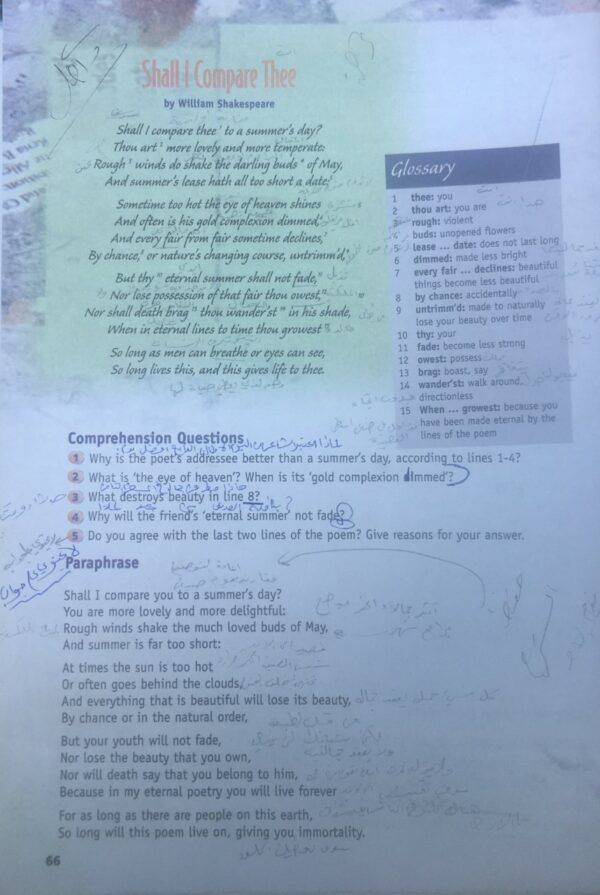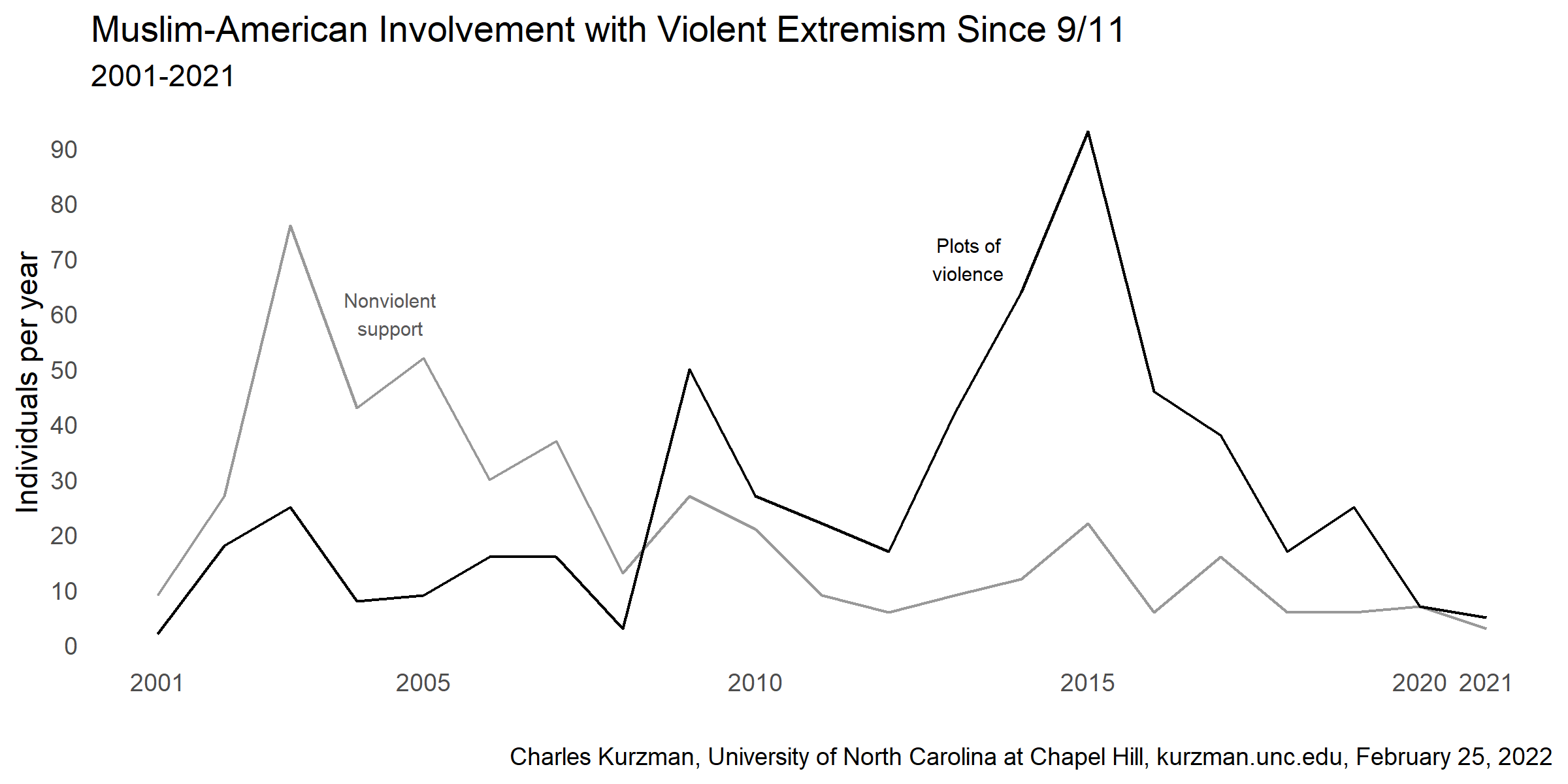2022
How would we know if we were witnessing a revolution in Iran?
 Charles Kurzman, “How Would We Know If We Were Witnessing a Revolution in Iran?” Monkey Cage, The Washington Post, December 19, 2022. “After weeks of protests in Iran, Iranians are asking the big question: Is the Islamic republic about to be overthrown? Some experts think it’s only a matter of time, but for all of our theoretical models and real-time news, the truthful answer is that nobody knows. Revolutions are inherently unpredictable.” More… Kurdish translation published by تیشک (Tishk), January 2023.
Charles Kurzman, “How Would We Know If We Were Witnessing a Revolution in Iran?” Monkey Cage, The Washington Post, December 19, 2022. “After weeks of protests in Iran, Iranians are asking the big question: Is the Islamic republic about to be overthrown? Some experts think it’s only a matter of time, but for all of our theoretical models and real-time news, the truthful answer is that nobody knows. Revolutions are inherently unpredictable.” More… Kurdish translation published by تیشک (Tishk), January 2023.
When Do Muslims Vote Islamic?
 Charles Kurzman and Didem Türkoğlu, “When Do Muslims Vote Islamic?” in Fatma Müge Göçek and Gamze Evcimen, editors, The I.B. Tauris Handbook of Sociology and the Middle East (London: I.B. Tauris, 2022), pp. 163-174. “This study updates results from two previous papers, published in The Journal of Democracy in 2010 and 2015…. Here we present data on Islamic political parties’ performance in parliamentary elections through the end of 2020, along with an expanded set of electoral platforms. We find that Islamic parties have not fared much better in elections since the Arab Spring than before. As in earlier years, a handful of Islamic parties have won pluralities of the vote, especially in “breakthrough” elections after long periods of autocratic rule, while most Islamic parties received 2 percent of seats in parliament or less. The Islamic political sector as a whole — that is, the proportion of seats won by all Islamic parties in each election — fell slightly to a median of 12 percent since the Arab Spring.” More…
Charles Kurzman and Didem Türkoğlu, “When Do Muslims Vote Islamic?” in Fatma Müge Göçek and Gamze Evcimen, editors, The I.B. Tauris Handbook of Sociology and the Middle East (London: I.B. Tauris, 2022), pp. 163-174. “This study updates results from two previous papers, published in The Journal of Democracy in 2010 and 2015…. Here we present data on Islamic political parties’ performance in parliamentary elections through the end of 2020, along with an expanded set of electoral platforms. We find that Islamic parties have not fared much better in elections since the Arab Spring than before. As in earlier years, a handful of Islamic parties have won pluralities of the vote, especially in “breakthrough” elections after long periods of autocratic rule, while most Islamic parties received 2 percent of seats in parliament or less. The Islamic political sector as a whole — that is, the proportion of seats won by all Islamic parties in each election — fell slightly to a median of 12 percent since the Arab Spring.” More…
Data available in an Excel spreadsheet.
The Globalization of Social Forces

Data for Figure 1 (Social Forces, 1922-2020, titles only) and Figure 2 (AJS/ASR/SF, 1953-2020, titles and abstracts).
The State of the Canon: Sociological Theory Syllabi in the United States
 Charles Kurzman, “The State of the Canon: Sociological Theory Syllabi in the United States,” Perspectives: Newsletter of the ASA Theory Section, August 29, 2022. When I was in graduate school in the 1980s, the syllabus for my required course in sociological theory started with Karl Marx and ended with Max Weber. In between, we read Emile Durkheim. That was it. A generation later, how is sociological theory taught in the United States today? More…
Charles Kurzman, “The State of the Canon: Sociological Theory Syllabi in the United States,” Perspectives: Newsletter of the ASA Theory Section, August 29, 2022. When I was in graduate school in the 1980s, the syllabus for my required course in sociological theory started with Karl Marx and ended with Max Weber. In between, we read Emile Durkheim. That was it. A generation later, how is sociological theory taught in the United States today? More…
English-Language Workbook from Mosul, Iraq, Donated to UNC
 Charles Kurzman, “English-Language Workbook from Mosul, Iraq, Donated to UNC,” UNC Center for Middle East and Islamic Studies, April 26, 2022. In 2018, months after the Islamic State had been forced out of Mosul in a bloody, block-by-block battle, researcher Noor Ghazi, a professor of the practice at the University of North Carolina at Chapel Hill, visited the city with a small camera to understand how the people of Mosul had survived the Islamic State’s oppressive rule. The North Carolina Consortium for Middle East Studies was honored to support Ms. Ghazi’s documentary film, and to screen the premiere on April 18, 2022, at the Nelson Mandela Auditorium in the FedEx Global Education Center at UNC-Chapel Hill, with Ms. Ghazi in attendance to introduce the film and answer audience questions afterward. More…
Charles Kurzman, “English-Language Workbook from Mosul, Iraq, Donated to UNC,” UNC Center for Middle East and Islamic Studies, April 26, 2022. In 2018, months after the Islamic State had been forced out of Mosul in a bloody, block-by-block battle, researcher Noor Ghazi, a professor of the practice at the University of North Carolina at Chapel Hill, visited the city with a small camera to understand how the people of Mosul had survived the Islamic State’s oppressive rule. The North Carolina Consortium for Middle East Studies was honored to support Ms. Ghazi’s documentary film, and to screen the premiere on April 18, 2022, at the Nelson Mandela Auditorium in the FedEx Global Education Center at UNC-Chapel Hill, with Ms. Ghazi in attendance to introduce the film and answer audience questions afterward. More…
Periodic Table Geography

March 28, 2022. Until last month, Ukraine produced most of the world’s neon – a noble gas (atomic number 10) that lights up advertising signage and helps lasers etch patterns onto silicon computer chips. Where do the other elements come from? More…
Muslim-American Involvement with Violent Extremism, 2001-2021
- A full collection of past reports is available here.
